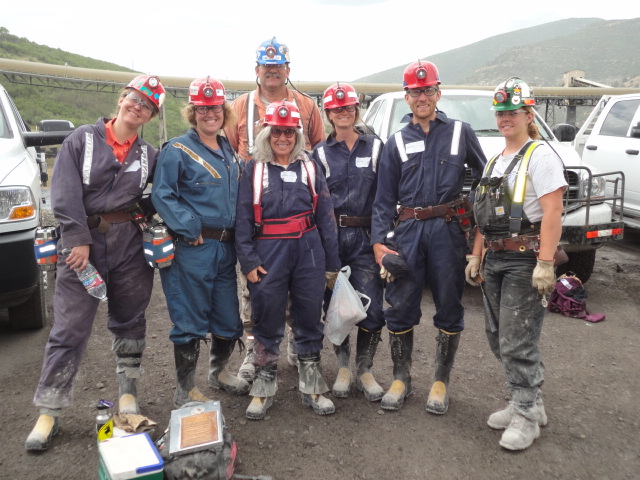
October 15, 2014 – This past summer, a federal court, in response to a suit brought by Wild Earth Guardians, overturned a coal mine expansion decision for the West Elk Mine, and vacated the North Fork Exception to the Colorado Roadless Rule on the grounds that the U.S. government failed to consider climate change impacts of the mining proposal. Climate change impacts from coal mining must be addressed, and as a nation we need to wean ourselves off coal, but the Conservation Center maintains the opinion that the cleaner-burning coal derived from the underground mines in the North Fork Valley should be the last to go. Over the decades, the North Fork Valley mines – especially the West Elk Mine – have demonstrated that they can extract coal with minimal environmental impacts. This is not the case with strip mining, nor is it the case with mountaintop removal coal mining in the Appalachians. Yet the lawsuit does not address those more destructive mines.
Nine years ago, the first draft of the Colorado Roadless Rule proposed to eliminate all 70,000 acres of existing roadless areas in the North Fork. WSERC and some coal mines worked together to develop a plan that was eventually incorporated into the Colorado Roadless Rule with the support of the mines and conservationists. This plan retained roadless protection for all 70,000 acres, with a temporary exemption for mineable areas adjacent to the three coal mines in the valley. When mining is completed, the mines must restore those areas to the same wild, roadless condition as they were before mining, and the Forest Service will manage them as roadless areas. The West Elk mine has already demonstrated its ability to restore disturbed areas. Some temporary disturbance is a small price to pay for the long-term protection of 70,000 acres in the North Fork.
One way to significantly reduce the climate impact of coal mining is methane capture. Methane is a powerful greenhouse gas, 21 times more potent than carbon dioxide. The global warming contribution from our local mines is significant, but the Conservation Center believes that here in the North Fork Valley we have an opportunity to lead the nation in coal mine methane capture technology. Coal mines must vent methane to safeguard their miners. The West Elk Mine captures and uses some of its methane for heating the mine. The coal mine methane capture facility at Oxbow’s Elk Creek Mine, one of the nation’s largest coal mine methane capture facilities, has demonstrated that the technology is available and that it works. This project is a model for coal mining around the world. The mines and the Federal government should be working together to push the limits on methane capture.
While the Court’s decision has the potential to strengthen the case for broader implementation of coal mine methane capture technologies to reduce greenhouse emissions, we are concerned about other possible consequences. If this decision causes closure of the West Elk Mine, a likely result will be that dirtier coal from more destructive mines will fill the supply void. This will make matters worse for the planet, not better, and it will have bad economic consequences for the North Fork Valley, putting many of our neighbors out of work.
Action on climate change is urgently needed, but we have opposed Wild Earth Guardian’s lawsuit from the outset. It is not sensible to address climate change by attacking one of the most environmentally-responsible mines producing the cleanest coal, while letting coal mines that are more destructive and extract dirtier coal off the hook. That is counter-productive.
###
